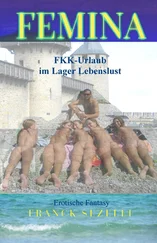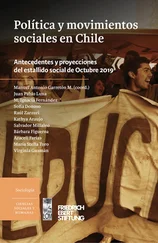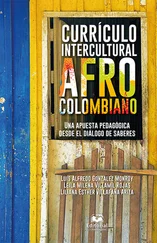Autilio AR, Bechard MJ, Bildstein KL (2019). Social scavenging by wintering striated caracaras ( Phalcoboenus australis ) in the Falkland Islands. Behavioral Ecology and Sociobiology 73:27.
Avendaño M, Cantillánez M, Olivares A, Oliva M (1998). Indicadores de agregación reproductiva de Thais chocolata (Duclos, 1832) (Gastropoda, Thaididae) en Caleta Punta Arenas (21° 38’S-70° 09’W). Investigaciones Marinas 26:15-20.
Baeza JA, Thiel M (2000). Host use pattern and life history of Liopetrolisthes mitra , a crab associate of the black sea urchin Tetrapygus niger . Journal of the Marine Biological Association of the United Kingdom 80:639-645.
Baeza JA, Hernáez P (2015). Population distribution, sexual dimorphism, and reproductive parameters in the crab Pinnixa valdiviensis Rathbun, 1907 (Decapoda: Pinnotheridae), a symbiont of the ghost shrimp Callichirus garthi (Retamal, 1975) in the southeastern Pacific. Journal of Crustacean Biology 35:68-75.
Bahamonde N, Lopez MT (1961). Estudios biológicos en la población de Aegla laevis laevis (-) (Latreille) de El Monte (Crustacea, Decapoda, Anomura). Investigaciones Zoológicas Chilenas 7:19-58.
Baird RW (2000). The killer whale: foraging specializations and group hunting. Pp. 127-153, en: Cetacean societies: field studies of dolphins and whales (Mann J, Connor RC, Tyack PL, Whitehead H, eds.). Chicago University Press, Chicago, Estados Unidos de América.
Baird RW, Dill LM. (1996). Ecological and social determinants of group size in transient killer whales. Behavioral Ecology 7:408-416.
Barash DP (1974). The evolution of marmot societies: a general theory. Science 185:415-420.
Barbosa A, Moreno J, Potti J, Merino S (1997). Breeding group size, nest position and breeding success in the chinstrap penguin. Polar Biology 18:410-414.
Barocas A, Golden HN, Harrington MW, McDonald DB, Ben-David M (2016). Coastal latrine sites as social information hubs and drivers of river otter fission-fusion dynamics. Animal Behaviour 120:103-114.
Barri FR, Roldán N, Navarro JL, Martella MB (2012). Effects of group size, habitat and hunting risk on vigilance and foraging behaviour in the Lesser Rhea ( Rhea pennata pennata ). Emu- Austral Ornithology 112:67-70.
Beauchamp G (1999). The evolution of communal roosting in birds: origin and secondary losses. Behavioral Ecology 10:675-687.
Beauchamp G (2004). Reduced flocking by birds on islands with relaxed predation. Proceedings of the Royal Society B: Biological Sciences 271:1039-1042.
Beauchamp G (2014). Do avian cooperative breeders live longer? Proceedings of the Royal Society of London B: Biological Sciences 281:20140844.
Beck S, Kuningas S, Esteban R, Foote AD (2011). The influence of ecology on sociality in the killer whale ( Orcinus orca ). Behavioral Ecology 23:246-253.
Bednarz JC (1988). Cooperative hunting in Harris’ hawks ( Parabuteo unicinctus ). Science 239:1525-1527.
Begall S, Gallardo MH (2000). Spalacopus cyanus (Rodentia: Octodontidae): an extremist in tunnel constructing and food storing among subterranean mammals. Journal of Zoology 251:53-60.
Begall S, Burda H, Schneider B (2004). Hearing in coruros ( Spalacopus cyanus ): special audiogram features of a subterranean rodent. Journal of Comparative Physiology A 190:963-969.
Bertrand A, Barbieri MA, Gerlotto F, Leiva F, Córdova J (2006). Determinism and plasticity of fish schooling behaviour as exemplified by the South Pacific jack mackerel Trachurus murphyi . Marine Ecology Progress Series 311:145-156.
Bertrand A, Gerlotto F, Bertrand S, Gutiérrez M, Alza L, Chipollini A, Díaz E, Espinoza P, Ledesma J, Quesquén R, Peraltilla S, Chavez F (2008). Schooling behaviour and environmental forcing in relation to anchoveta distribution: an analysis across multiple spatial scales. Progress in Oceanography 79:264-277.
Blomberg SP, Garland T (2002). Tempo and mode in evolution: phylogenetic inertia, adaptation and comparative methods. Journal of Evolutionary Biology 15:899-910.
Blumstein DT, Armitage KB (1998). Life history consequences of social complexity a comparative study of ground-dwelling sciurids. Behavioral Ecology 9:8-19.
Blumstein DT, Møller AP (2008). Is sociality associated with high longevity in North American birds? Biology Letters 4:146-148.
Blundell GM, Ben-David M, Bowyer RT (2002). Sociality in river otters: cooperative foraging or reproductive strategies? Behavioral Ecology 13:134-141.
Boesch C (1994). Cooperative hunting in wild chimpanzees. Animal Behaviour 48:653-667.
Boesch C, Boesch H (1989). Hunting behavior of wild chimpanzees in the Tai National Park. American Journal of Physical Anthropology 78:547-573.
Boltaña S, Thiel M (2001). Associations between two species of snapping shrimp, Alpheus inca and Alpheopsis chilensis (Decapoda: Caridea: Alpheidae). Journal of the Marine Biological Association of the United Kingdom 81:633-638.
Bozinovic F, Rosenmann M, Veloso C (1988). Termorregulación conductual en Phyllotis darwini (Rodentia: Cricetidae): efecto de la temperatura ambiente, uso de nidos y agrupamiento social sobre el gasto de energía. Revista Chilena de Historia Natural 61: 81-86.
Brante A, Fernández M, Viard F (2011). Microsatellite evidence for sperm storage and multiple paternity in the marine gastropod Crepidula coquimbensis . Journal of Experimental Marine Biology and Ecology 396:83-88.
Brehmer P, Josse E, Nøttestad L (2012). Evidence that whales ( Balaenoptera borealis ) visit drifting fish aggregating devices: do their presence affect the processes underlying fish aggregation? Marine Ecology 33:176-182.
Briga M, Pen I, Wright J (2012). Care for kin: within-group relatedness and allomaternal care are positively correlated and conserved throughout the mammalian phylogeny. Biology Letters 8:533-536.
Broly P, Mullier R, Devigne C, Deneubourg JL (2016). Evidence of self-organization in a gregarious land-dwelling crustacean (Isopoda: Oniscidea). Animal Cognition 19:181-192.
Brosset A (2000). Parasitisme du nid de la foulque géante Fulica gigantea par le goéland andin Larus serranus : lien de cause à effet entre ce parasitisme et la structure des populations du goéland. Revue d Ecologie-La Terre et la Vie 55:395-399.
Brown CR (2016). The ecology and evolution of colony-size variation. Behavioral Ecology and Sociobiology 70:1613-1632.
Brown JL (1987). Helping and communal breeding in birds: ecology and evolution . Princeton University Press, Princeton, Estados Unidos de América.
Brown JL, Montoya AB, Gott EJ, Curti M (2003). Piracy as an important foraging method of aplomado falcons in southern Texas and northern Mexico. The Wilson Journal of Ornithology 115:357-360.
Brussee BE, Coates PS, Hothem RL, Howe KB, Casazza ML, Eadie JM (2016). Nest survival is influenced by parental behaviour and heterospecifics in a mixed-species colony. Ibis 158:315-326.
Buckley NJ (1997). Spatial-concentration effects and the importance of local enhancement in the evolution of colonial breeding in seabirds. American Naturalist 149:1091-1112.
Buckley NJ (1997). Experimental tests of the information-center hypothesis with black vultures ( Coragyps atratus ) and turkey vultures ( Cathartes aura ). Behavioral Ecology and Sociobiology 41:267-279.
Читать дальше












